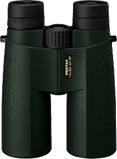Destructive Pholiota
(Hemipholiota populnea)
Conservation • Description • Habitat • Ecology • Distribution • Taxonomy
Conservation Status |
|||
| IUCN Red List | not listed |
||
| NatureServe | NNR - Unranked |
||
| Minnesota | not listed |
||
Description
Destructive Pholiota is a large, late season, wood-rotting mushroom. It occurs in Europe, western Asia, and North America. In the United States it occurs from Vermont to Pennsylvania, west to Washington, northern California, and New Mexico. It is mostly absent from the south, the Great Plains, and the desert southwest. It is found in late summer and fall; alone, in groups, or in clusters; in floodplains and riparian areas. It grows on dead wood of poplar, especially cottonwood and balsam poplar, and occasionally also in willows. It is often seen on recently cut surfaces of logs. It obtains its nutrients from dead wood (saprobic). It rapidly decomposes wood, and this is the feature that gives it one of its common names.
When it first appears, the cap is convex and usually white to creamy buff, sometimes yellowish-brown or orangish-brown. The upper surface is hairless and dry but sticky when moist. It is conspicuously covered with whitish to buff, cottony scales or patches, remnants of the partial veil. More shaggy remnants cling to the margins. As it ages the cap flattens out, becoming broadly convex, and the scales become matted down or wash off. Mature caps can be 2¼″ to 8″ (6 to 20 cm) in diameter but are usually no more than 6¼″ (16 cm) in diameter.
The stalk is robust, solid, hard, white, and abundantly covered with scales. It can be 1½″ to 7″ (4 to 18 cm) long but is usually no more than 4″ (10 cm) in length. It is ⅜″ to 1¼″ (1 to 3 cm) thick at the top, equal or sometimes expanding to 2″ to 2¾″ (5 to 7 cm) thick at the base. It may be attached in the center of the cap or off-center. As it ages it turns brownish, at least near the base. Part of the partial veil remains as a small ring near the top of the stalk. The ring is covered with cottony, hair-like fibers (fibrillose). It curves downward and becomes completely covered with cinnamon brown spores.
The gills are closely spaced. They may be notched at the stalk or broadly attached (adnate). They are white at first, becoming brown to cinnamon-brown at maturity. There are frequent secondary, short gills between the main gills.
The flesh is thick, firm, and white. It does not change color when sliced. It is edible but tough and the taste is disagreeable.
The spore print is cinnamon brown.
Similar Species
Habitat and Hosts
Floodplains and riparian areas
Cottonwood and balsam poplar, and occasionally willow
Ecology
Season
Late summer and fall
Distribution |
||
|
Sources Biodiversity occurrence data published by: Minnesota Biodiversity Atlas (accessed through the Minnesota Biodiversity Atlas Portal, bellatlas.umn.edu, 11/8/2025). |
|
| 11/8/2025 | ||
Occurrence |
||
|
||
Taxonomy
Kingdom
Fungi (Fungi)
Subkingdom
Dikarya
Phylum
Basidiomycota (Basidiomycete Fungi)
Subphylum
Agaricomycotina (Higher Basidiomycetes)
Class
Agaricomycetes (Mushrooms, Bracket Fungi, Puffballs, and Allies)
Subclass
Agaricomycetidae
Order
Agaricales (Common Gilled Mushrooms and Allies)
Suborder
Agaricineae
Family
Hymenogastraceae
Genus
Hemipholiota
Genus
This mushroom was formerly classified as Pholiota destruens and was the type species in the subgenus Hemipholiota. A study published in 1986 showed that the correct name of the species should be Pholiota populnea. The subgenus Hemipholiota was broadly defined and contained 15 species that were not similar in appearance. Several studies showed the grouping to be unnatural, and by 2003 the subgenus contained only 3 species, including Pholiota populnea. DNA studies published in 2002 and 2007 showed that the subgenus was clearly not closely related to the type species of Pholiota, and Hemipholiota was raised to genus level. This phylogenetic separation also necessitated a reconsideration of its family placement.
Family
The family placement of Hemipholiota populnea (formerly Pholiota populnea) is currently debated, reflecting the transition from traditional to molecular classification. It was long placed in the family Strophariaceae based on morphological similarities like its rusty-brown spores and wood-rotting habit. However, extensive DNA sequencing (phylogenetics) has definitively shown that the Hemipholiota lineage is not closely related to the core Pholiota genus, and modern classifications indicate it should be placed in the family Hymenogastraceae.
Subordinate Taxa
Synonyms
Agaricus comosus
Agaricus comosus var. albus
Agaricus destruens
Agaricus populneus
Dryophila destruens
Hemipholiota comosa
Hemipholiota destruens
Myxocybe destruens
Pholiota comosa
Pholiota comosa
Pholiota comosa var. alba
Pholiota destruens
Pholiota destruens var. edmundii
Pholiota populnea
Common Names
Destructive Pholiota
Poplar Pholiota
Glossary
Partial veil
A protective covering over the gills or pores of a developing mushroom. At maturity it disappears, collapses into a ring around the stalk, or wears away into a cobwebby covering and ring zone.
Saprobic
A term often used for saprotrophic fungi. Referring to fungi that obtain their nutrients from decayed organic matter.
Visitor Photos
Share your photo of this fungus.
This button not working for you?
Simply email us at info@MinnesotaSeasons.com.
Attach one or more photos and, if you like, a caption.
Dan W. Andree |
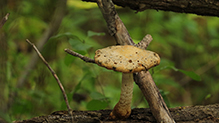 |
This one is kind of homely... Probably because it’s decaying. Was growing out of a downed tree trunk in some woodlands over by Twin Valley, Mn. Sept. 11, 2025 |
Margot Avey |
||
 |
 |
|
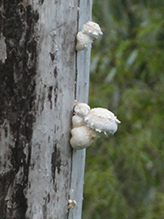 |
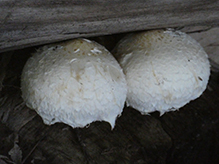 |
|
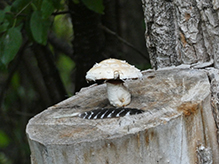 |
||
| Interesting place to grow! |
|
|
MinnesotaSeasons.com Photos
|

Slideshows
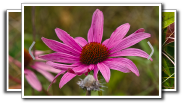
Visitor Videos
Share your video of this fungus.
This button not working for you?
Simply email us at info@MinnesotaSeasons.com.
Attach a video, a YouTube link, or a cloud storage link.
Other Videos
Pholiota populnea
Apostle of Azathoth

Visitor Sightings
Report a sighting of this fungus.
This button not working for you?
Simply email us at info@MinnesotaSeasons.com.
Be sure to include a location.
Dan W. Andree
9/11/2025
Margot Avey
9/17/2022
MinnesotaSeasons.com Sightings |
|
